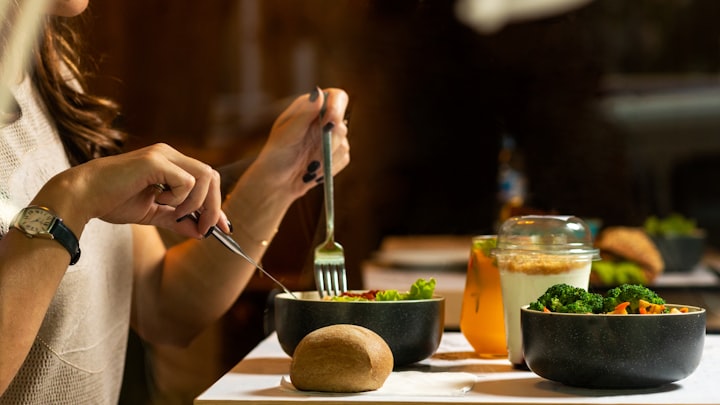The Blue Zone Diet: Foods and Eating Habits that Promote Longevity
Tips for incorporating blue zone principles into your own diet.

"Embracing the Nutrient-Packed Blue Zone Diet for a Healthier You"
Introduction:
In the quest for a healthier lifestyle, many of us look to the world's Blue Zones for inspiration. Let's cast our attentions to these regions, famed far and wide for their impressive lifespans and vibrant health. Remarkably, regardless of geographical locations or cultural diversities, the diets they favour weave a similar fabric—wholesome foods brimming with nutrients. Indeed, while specific dishes may naturally differ from one place to another—the uniform underlying mantra is unchanged: Fruits and vegetables freshly-harvested in-season; whole grains aplenty; protein-loaded legumes standing by nuts form the very bedrock of meals consumed therein.
Keen on learning how these 'Blue Zones' manage it all? And wanting some advice on tweaking your dietary habits along those lines--extending healthier years added to your life span AND enhancing its quality? Then quickly put up your reading glasses! This article aspires at unmasking secrets behind Blue Zone diet practices—and also provides guidance regarding incorporating similar principles into your own daily nourishment regime.
The Blue Zone Diet:
Residents of Blue Zones enjoy a diverse range of foods, with an emphasis on plant-based nutrition. Every day, they guzzle down a flavorful medley of veggies. Think leafy greens, cruciferous types, and root vegetables—not forgetting nightshades as well. They're also big on pulses: beans 'n' lentils, peas 'n' chickpeas all feature in their food fest! Fruits abound aplenty alongside hunky whole grains too.When it comes to nuts and seeds – two ounces of the former and half a cup cooked beans daily take center stage in this nutritional extravaganza.And just so you know—they largely shun processed stuff like that dodgy 2-minute noodle pack at the back your pantry.Shiny bright is their mantra with naturally nutrient-dense nosh taking top spot!Every day, they guzzle down a flavorful medley of veggies. Think leafy greens, cruciferous types, and root vegetables—not forgetting nightshades as well. They're also big on pulses: beans 'n' lentils, peas 'n' chickpeas all feature in their food fest! Fruits abound aplenty alongside hunky whole grains too.When it comes to nuts and seeds – two ounces of the former and half a cup cooked beans daily take center stage in this nutritional extravaganza.And just so you know—they largely shun processed stuff like that dodgy 2-minute noodle pack at the back your pantry.Shiny bright is their mantra with naturally nutrient-dense nosh taking top spot!
Tips for Adopting Blue Zone Principles:
1. Increase Your Plant-Based Intake: To align your diet with Blue Zone principles, aim for at least five servings of fruits and vegetables each day. Packed with a magnificent combo of vitamins, minerals, and antioxidants that boost the health meter, these edibles surely tuck in an arsenal for durable living and cheerful disposition overall.
2. Explore Plant-Sourced Proteins: In Blue Zones, most calories come from plant-based sources. Incorporate more plant-sourced proteins like legumes, nuts, and seeds into your meals. Not solely are these protein channels nourishing, but they also provide a sustainable and heart-lovin' solution.
3. Diversify Your Vegetable Choices: Follow the Blue Zone model by enjoying a variety of vegetables, from leafy greens to cruciferous varieties, root vegetables, and nightshades. The wide range of nutrients in different vegetables contributes to better health.
4. Moderate Your Sugar Intake: One of the key differences in Blue Zone diets is the avoidance of processed food and added sugars. Reduce your consumption of synthetically sweetened products to promote better health and longevity.
5. Learn to Like New, Healthy Foods: Discovering the Blue Zone way of eating may require acquiring a taste for new foods. Experts suggest that we can develop a liking for foods that are good for us. These strategies can be adapted for both children and adults to foster a love for nutritious foods.
Conclusion:
The Blue Zone diet is more than just a meal plan; it's a blueprint for a longer, healthier life. By adopting the dietary principles followed by those living in Blue Zones, you can make meaningful changes to your eating habits and overall well-being. Embrace the power of whole, plant-based foods, and say goodbye to processed products and added sugars. Your journey to a healthier you starts with these simple, yet profound, dietary adjustments.
About the Creator
Rogelio Perez
Writer enthusiast, wellness advocate, nature lover, pianist, dog aficionado, eternal optimist, and all-around life enthusiast.






Comments
There are no comments for this story
Be the first to respond and start the conversation.